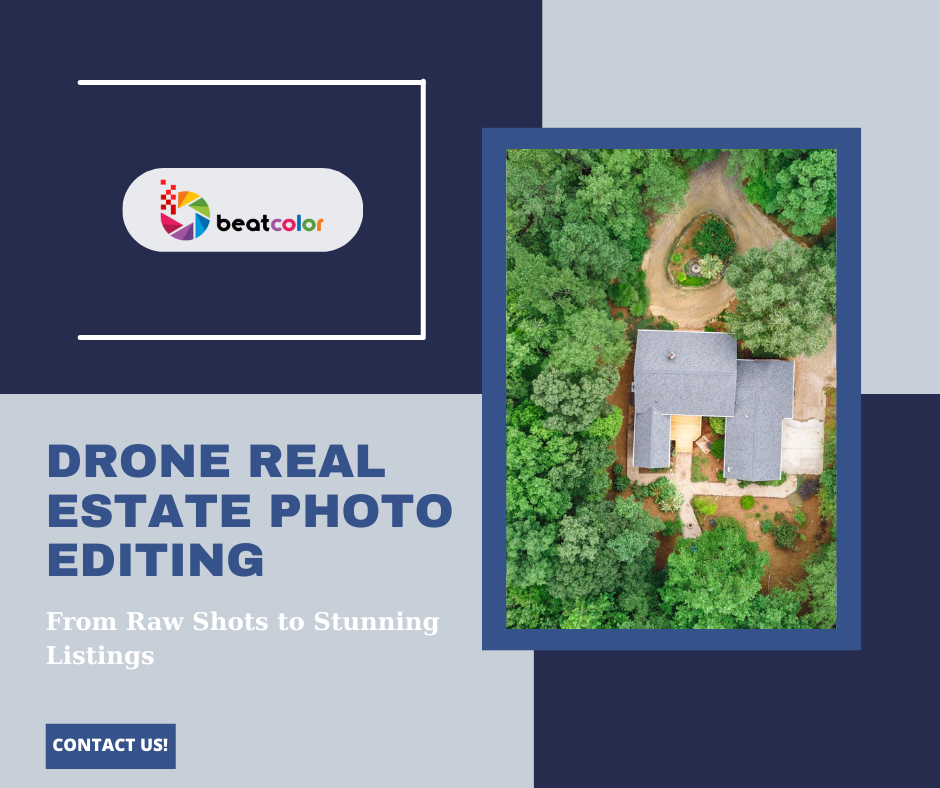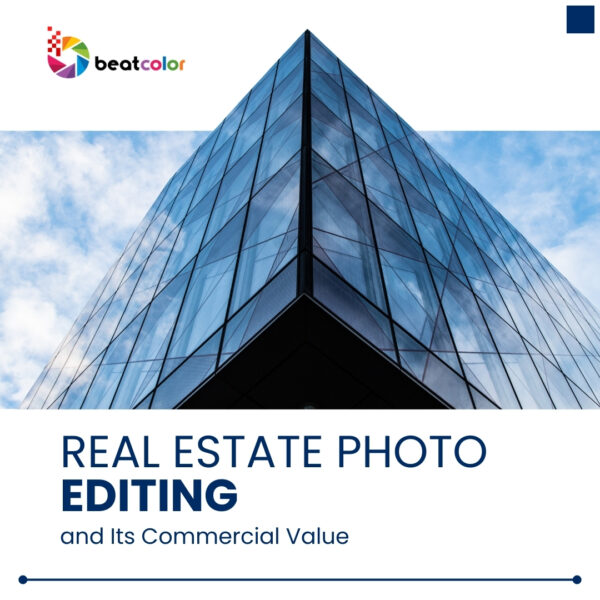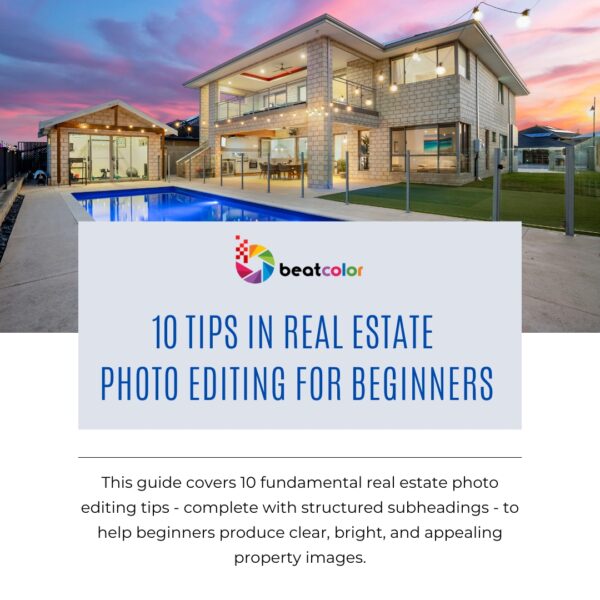Drone Real Estate Photo Editing: From Raw Shots to Stunning Listings
Picture this: a sweeping aerial view of a home, roof tiles glistening in the sun, backyard stretching wide. Beautiful, right? But it is true that raw drone shots often look flat. Harsh sunlight, odd shadows, and distracting details creep in. That’s where drone real estate photo editing transforms a simple flyover into a listing that sells a lifestyle.
In 2025, drone photography is no longer optional. Buyers expect it. Sellers demand it. Yet, polished editing is what makes those shots magnetic. Let’s break down the process, from capture to final delivery, with the latest updates you need to know.
Why Drones Dominate Real Estate Marketing
Buyers shop with their eyes first. Drone visuals deliver perspective you simply can’t get from the ground. They show scale, property lines, neighborhood context, and curb appeal all at once. According to recent market data, listings with aerial visuals receive up to 68% more views online than those without. And here’s the kicker—well-edited drone media helps homes sell faster, often at higher prices.
Still, the drone itself doesn’t guarantee magic. Editing does.
Capturing with Editing in Mind
Good editing starts before you even launch. Smart pilots plan their flights thinking like editors. Keep horizons straight in-camera, shoot in RAW for flexibility, and bracket exposures to handle tough lighting. Shooting in flat color profiles ensures smoother grading later.
These simple habits make editing faster, cleaner, and far more effective.
Compliance Isn’t Optional
Editing can fix skies, but it can’t erase fines. Regulations matter. In the U.S., flying commercially means holding a Part 107 certificate. And as of March 2024, Remote ID compliance is mandatory. No more grace period—drones must broadcast their ID signal or face penalties.
Following rules isn’t just legal. It shows professionalism that sellers and brokerages value.
From Raw to Refined: The Editing Workflow
So, you’ve landed stunning aerial shots. Now the editing begins. Here’s how pros transform them:
- Cull and Correct – Choose the sharpest, most balanced frames. Fix distortion and straighten horizons first. A tilted roofline ruins credibility.
- Color Balance – Adjust white balance to match mood. Warm tones flatter brick homes; cooler tones highlight modern steel or glass.
- Tone and Detail – Lift shadows in yards, tame highlights on roofs, and sharpen only where needed. Buyers notice texture.
- Distraction Removal – Cars, trash bins, or pool floats? Gone. Clean edits keep attention on the property.
- Sky and Lawn Enhancements – AI tools now replace skies or repair patchy grass in seconds. Done right, it feels natural, not fake.
This step-by-step process ensures every aerial feels inviting, not overwhelming.
Editing Video with Purpose
Drone video has its own rhythm. Short clips work best. Open with a wide reveal, glide into a property overview, and close with a smooth descent. Editing stitches these moments into a story.
Color grading balances skies with interiors, while stabilization removes jitters without stripping texture. Add subtle text overlays—acreage, pool features, or nearby landmarks. But avoid clutter. Viewers want clarity, not gimmicks.
How AI Speeds Up Workflows
In 2025, editing isn’t manual drudgery anymore. AI masks rooftops, removes objects, and even grades footage automatically. Yet, human editors still matter. AI accelerates, but creative judgment makes edits believable. A buyer can spot over-processed skies in seconds. Balance is everything.
Data-Driven Proof
Why invest in drone real estate photo editing today? Because the numbers say so. The global drone services market is projected to grow steadily through 2030, driven by real estate and construction demand. Sellers are asking for aerials. Agents are delivering. And the edited versions consistently outperform raw uploads.
Combining Drone Shots with Other Tools
Want even more impact? Pair aerials with virtual staging or 3D renderings. Aerials attract clicks. Virtual interiors keep buyers scrolling. Together, they tell a complete property story—from the street to the sofa.
Delivering for Modern Platforms
MLS platforms compress images heavily, so export wisely. A sweet spot is 3000–4000 pixels on the long side. For social media, especially Instagram Reels and TikTok, vertical 1080×1920 videos at 30 fps work best. Optimizing outputs for each platform ensures your edits look professional everywhere.
Final Thoughts
Drone photography changed real estate marketing. But real estate photo editing makes drone shots unforgettable. Editing polishes perspective, adds atmosphere, and removes distractions. In 2025, with compliance rules in place and AI boosting speed, the opportunity is clear: agents who invest in editing gain a powerful edge.
Raw shots might capture attention. Edited drone visuals close deals.
Read more:
Virtual Staging Real Estate Photo Editing vs. Traditional Staging: Which Wins in 2025?
REAL ESTATE PHOTOGRAPHY TIPS: EASY WAYS TO MAKE A SPACE LOOK BIGGER
Twilight Shots in Real Estate: The Hidden Power of the Golden Hour











